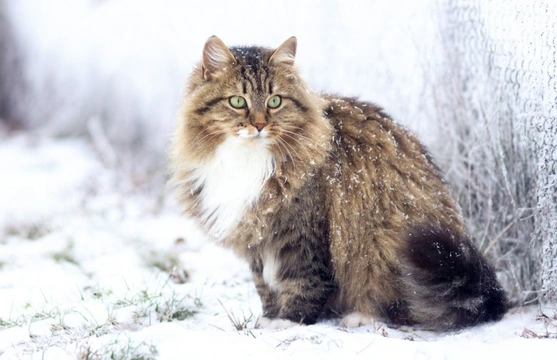
Is the Siberian cat breed hypoallergenic?
The cat is of course one of the most common and popular pets in the UK, regularly vying with dogs for the top spot in terms of popularity and appeal. Cats are quite versatile pets too, because although they should not be considered to be low maintenance pets and they do of course need the appropriate care, attention and lifestyle, they are less challenging in most respects than dogs.
They don’t need almost constant companionship, you don’t need to exercise them, and they are generally streetwise and very good at taking care of themselves. However, if you are an allergy sufferer and particularly, if you are allergic to cats, owning a cat might simply not be possible for you, however keen you might be to have one!
That said, allergies present differently in different people, and what triggers allergies, how bad they are, and how they affect each individual is apt to be very variable. Many people who tend to be allergic to cats are apt to find the occasional cat that doesn’t cause a bad reaction in them; and certain cat breeds are associated with being less likely to trigger allergy symptoms in sufferers as a whole.
One breed that is often spoken of as being a good cat for allergy sufferers, and one that is sometimes even described as or advertised as being hypoallergenic, is the Siberian cat breed.
In this article, we will share the truth behind claims that the Siberian cat breed is hypoallergenic, explain in more detail whether or not and why they might be a good pick for allergy sufferers, and share some more facts about Siberian cats and their suitability for cat allergy sufferers. Read on to learn more.
Is the Siberian cat breed hypoallergenic?
The simple answer to this is no, because there is no such thing as a hypoallergenic cat. Any cat can potentially trigger an allergy flare-up in a person, although this can be very variable and not all cats will affect all allergy sufferers in the same way.
However, whilst you can buy an allergenic duvet or pillow that is made of man-made materials and that can be classed as hypoallergenic, living, breathing animals like cats cannot be referred to as such!
Can Siberian cats trigger allergies?
Going with the simple answer once again, the answer to this is yes. Any cat can potentially trigger an allergy, because all cats produce a certain level of a number of proteins that are carried in dander and that may result in allergy flare-ups.
However, there is evidence that some members of the Siberian cat breed as a whole may produce less of the common allergenic proteins that can affect allergy sufferers, and so contact with them may result in less acute symptoms, or even no allergy flare-up at all in some people.
Siberian cats and their odds of triggering allergies
In studies undertaken to measure the levels of an allergenic protein called Fel d1 commonly produced by cats, Siberian cats as a whole have been found to produce lower levels of it than mixed breed cats, but as a rule, still produce a high level of it.
Across the board, around 50% of Siberian cats produce less Fel d1 allergenic proteins than the average for moggies and pedigree cats of other breeds, whilst 20% of cats of the breed are considered to produce very low levels of it – to the point that cats in this group might not trigger allergies at all in some allergy sufferers.
What type of Siberian cats might be best for allergy sufferers?
Any allergy sufferer seeking to find a Siberian cat that won’t trigger their allergies may need to expose themselves to many cats of the breed before they find one that produces a low enough level of allergens to fail to trigger symptoms, and this is not an exact science.
When visiting litters, parent cats should be considered in terms of their effect too, to get a better idea of the likely effect of any given kitten on the allergy sufferer in question. Picking an adult cat is generally the best way to ensure that any potential lack of allergy trigger in a kitten is reliable.
Silver-furred Siberian cats tend to produce the highest levels of Fel d1, so are those most likely to produce allergy symptoms.
Female cats tend to produce less Fel d1 than males, and so starting with female cats might be wise – although in studies into Siberian cats and allergy triggers, the 20% of cats in the lowest Fel d1 group were found to be comprised of an equal balance of males and females.
Ultimately, picking a cat for an allergy sufferer takes time, patience, great care, and a willingness to deliberately expose oneself to several potential sources of allergy triggers to identify a safe bet, and none of this is an exact science.
Allergies can change over time too, and the levels of Fel d1 produced by any cat can fluctuate, so you should meet and interact with any potentially viable cats several times before making a purchase.
Also, it is important to bear in mind that making the wrong choice has implications for the cat too, if you need to rehome them later on as a result of finding that they trigger your allergies to an intolerable level, so please consider this very carefully before you go ahead.



